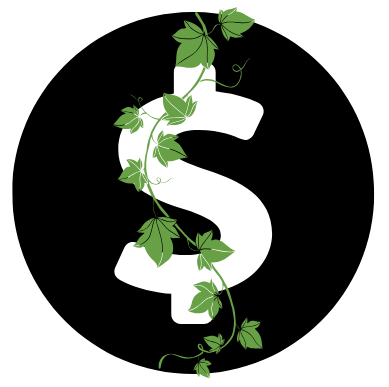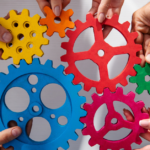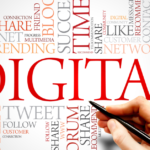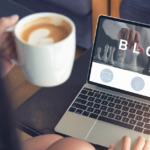AI art generators have revolutionized the creative landscape, offering unprecedented opportunities for artists and entrepreneurs alike.
These powerful tools harness complex algorithms to transform text prompts into stunning visual creations, opening doors to new forms of artistic expression and profitable ventures.
The Technology Behind AI Art Generation
AI art generation relies on sophisticated machine learning algorithms, primarily deep learning neural networks. These systems are trained on large image datasets, learning to recognize patterns, styles, and visual elements.
When given a prompt or input, they use this learned knowledge to create new, unique images. The most common AI models used in art generation include:
Generative Adversarial Networks (GANs)
GANs consist of two neural networks – a generator and a discriminator – that work in opposition. The generator creates images, while the discriminator tries to distinguish between real and generated images.
This adversarial process results in increasingly realistic and high-quality outputs.
Diffusion Models
Diffusion models start with random noise and gradually refine it into a coherent image based on the input prompt. They’ve gained popularity because of their ability to produce highly detailed and diverse images.
Transformer-Based Models
Originally developed for natural language processing, these models have been adapted for image generation. They excel at understanding and generating images based on text descriptions.
Understanding these underlying technologies can help you choose the right AI art generator for your needs and better interpret and refine your results.
Top AI Art Generators: A Comprehensive Overview
Let’s explore some of the best AI art generators available today, each with it’s unique strengths and features:
Midjourney
Midjourney has quickly become a favorite among digital artists and designers. It’s known for it’s ability to create stunningly detailed and imaginative images from text prompts.
Key Features:
- Discord-based interface for easy collaboration
- Rapid generation of many image variations
- Ability to refine and upscale images
- Exceptional text-to-image capabilities
- Ability to edit and extend existing images
- Strong understanding of spatial relationships and object interactions
Pro Tips:
Experiment with combining different art styles in your prompts. For example, try “cyberpunk art nouveau cityscape” for unique results.
Use detailed, specific prompts for best results. Instead of “a cat,” try “a fluffy orange tabby cat wearing a top hat, sitting on a velvet cushion, painted in the style of Rembrandt.”
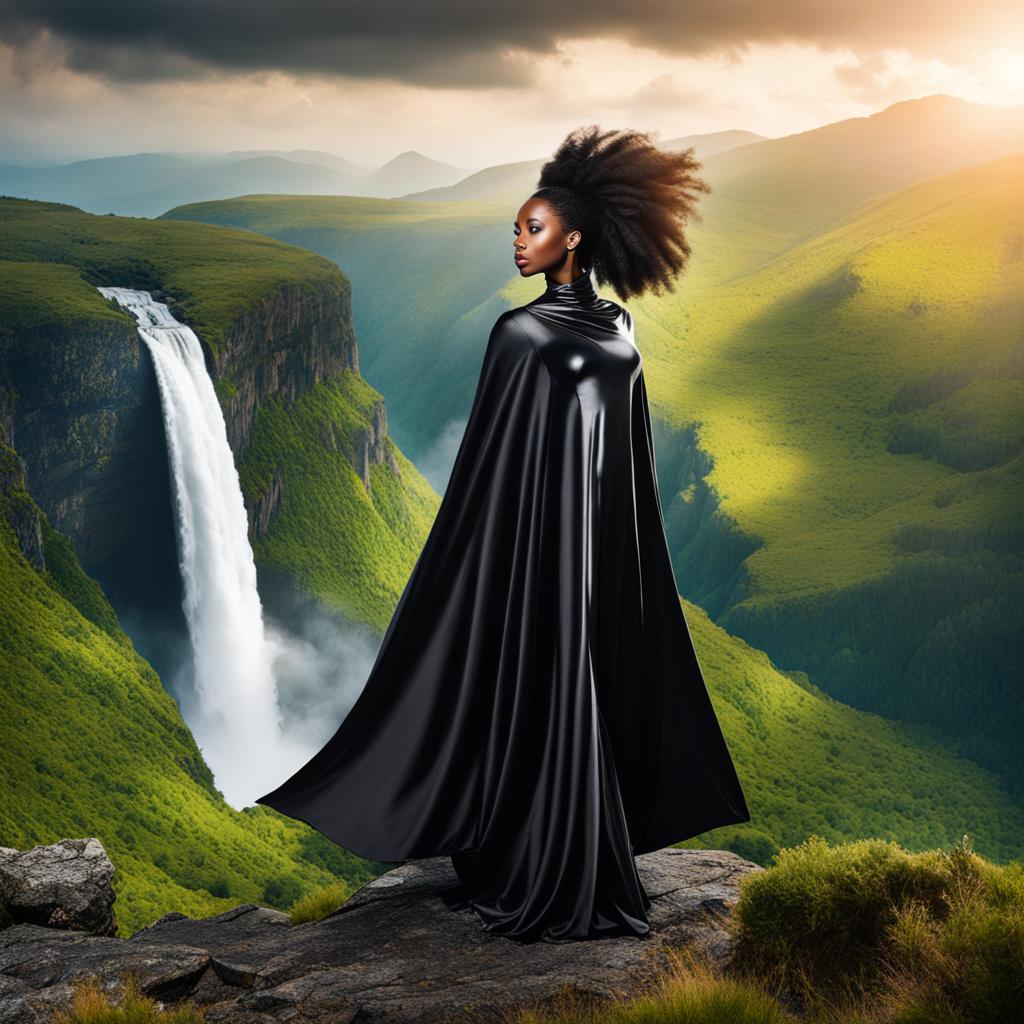
Stable Diffusion
An open-source powerhouse, Stable Diffusion has gained a massive following because of it’s accessibility and the level of control it offers users.
Key Features:
- Can be run locally on sufficiently powerful hardware
- Extensive community support and model fine-tuning options
- Ability to use custom training data
Pro Tip: Explore the various community-created models and fine-tuned versions for specialized tasks like character design or landscape generation.
Artbreeder
Artbreeder specializes in creating and blending portraits, landscapes, and abstract art. It’s particularly useful for generating unique character designs.
Key Features:
- Intuitive interface for blending and modifying images
- Collaborative features for working with other artists
- Ability to create “child” images from many “parent” images
Pro Tip: Use Artbreeder to create a base image, then refine it further in other AI art generators or traditional digital art software.
Nightcafe
Nightcafe offers a user-friendly platform for creating AI art, with a variety of styles and algorithms to choose from.
Key Features:
- Multiple AI models and style transfer options
- Credit-based system with free daily credits
- Built-in marketplace for selling created artworks
Pro Tip: Experiment with Nightcafe’s various style transfer options to give your AI-generated art a unique aesthetic.
Turning AI Art into a Profitable Side Hustle
Now that we’ve explored the top AI art generators, let’s dive into how you can leverage this technology to create a lucrative side hustle or passive income stream.
Print-on-Demand Products
One of the easiest ways to monetize your AI-generated art is through print-on-demand services. Platforms like Redbubble, Society6, and Printful allow you to upload your designs and sell them on various products without any upfront inventory costs.
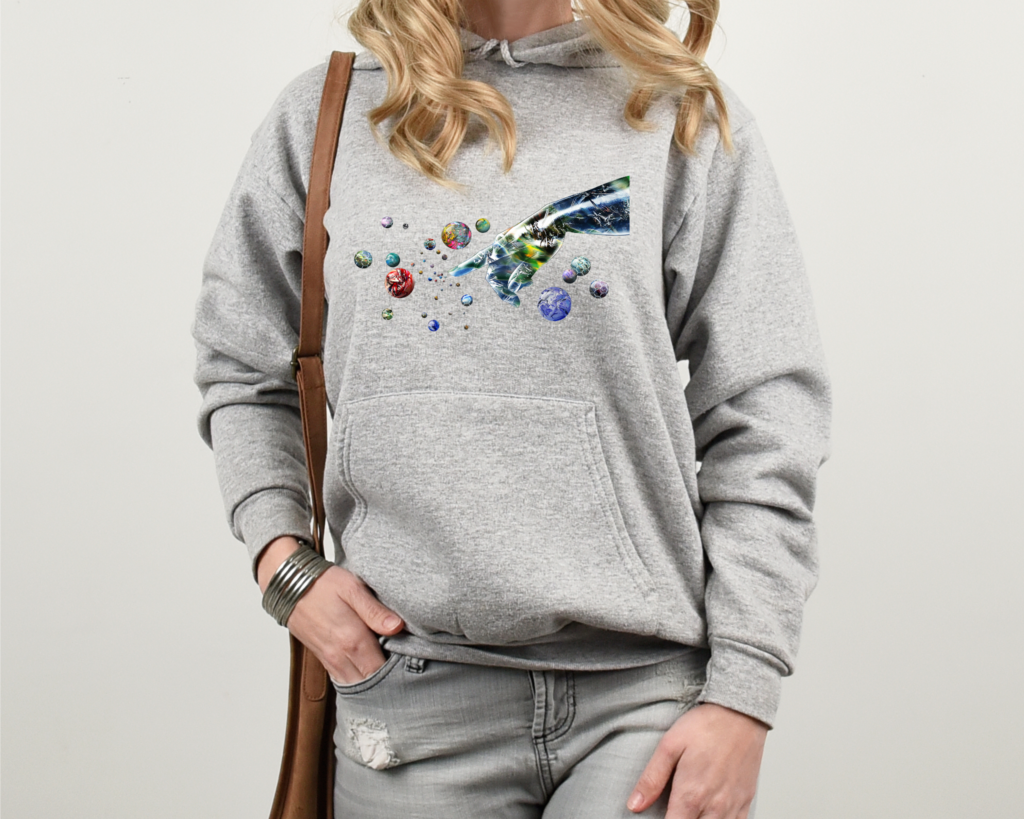
Strategy: Create themed collections of AI-generated art tailored to specific niches or interests. For example, you could create a series of surreal landscape designs for nature lovers or abstract patterns for modern home decor enthusiasts.
Stock Image Contributions
Many stock image websites now accept AI-generated art. By creating a diverse portfolio of high-quality images, you can earn passive income through licensing fees.
Key Insight: Focus on creating images that fill gaps in the market or address current trends in design and marketing. For instance, futuristic business concepts or abstract representations of technology are often in demand.
NFT Art Creation
The NFT (Non-Fungible Token) market offers opportunities for selling unique digital artworks. Use AI generators to create one-of-a-kind pieces or collections and sell them on NFT marketplaces like OpenSea or Rarible.
Pro Tip: Build a community around your NFT art by engaging with collectors on social media and creating a compelling narrative for your work. The story behind your AI-generated art can be just as valuable as the art itself.
Book Cover Design
Many self-published authors are looking for affordable, eye-catching book covers. Use AI art generators to create unique cover designs and offer your services on platforms like Fiverr or 99designs.
Strategy: Study current trends in book cover design for different genres. Use AI to generate base images, then refine them with traditional design tools to create professional-looking covers.
Custom Portrait Services
Offer personalized AI-generated portraits or stylized avatars for social media profiles, gaming characters, or gifts. Platforms like Etsy or your own website can be used to sell these services.
Pro Tip: Develop a signature style or offer many style options to attract a wider range of customers. You could specialize in “AI-enhanced pet portraits” or “futuristic avatar designs.”
AI Art Workshops and Courses
As AI art gains popularity, many people are interested in learning how to use these tools effectively. Create online courses or workshops teaching others how to master AI art generation.
Key Insight: Offer both beginner and advanced courses to cater to different skill levels and interests. Topics could range from “Getting Started with Midjourney” to “Advanced Prompt Engineering for DALL-E 2.”
Overcoming Challenges in AI Art Creation
While AI art generators offer incredible opportunities, they also come with their own set of challenges. Here are some common issues you might face and how to overcome them:
Consistency and Control
AI art generators can be unpredictable, sometimes producing results that don’t quite match your vision.
Solution: Master the art of prompt engineering. Learn to craft detailed, specific prompts that guide the AI towards your desired outcome.
Keep a log of successful prompts for future reference.
Ethical and Legal Considerations
The AI art world is still grappling with issues of copyright and ethical use of training data.
Solution: Stay informed about the terms of service for the AI tools you use. When possible, use open-source models or those with clear licensing terms.
Be transparent about your use of AI in your art creation process.
Standing Out in a Crowded Market
As AI art becomes more prevalent, it can be challenging to differentiate your work.
Solution: Develop a unique style or niche. This could involve combining AI-generated elements with traditional art techniques or focusing on a specific theme or subject matter that resonates with your target audience.
Technical Limitations
Some AI art generators need powerful hardware or have usage limits that can hinder productivity.
Solution: Invest in cloud-based solutions or upgrade your hardware if necessary. Plan your projects around usage limits, or consider subscribing to paid tiers for increased access.
Advanced Techniques for AI Art Creation
To truly excel in AI art creation and make your side hustle stand out, consider these advanced techniques:
Prompt Engineering Mastery
Crafting effective prompts is an art form in itself. Here are some tips to improve your prompt engineering skills:
- Use specific, descriptive language
- Incorporate artistic styles and techniques
- Experiment with negative prompts to exclude unwanted elements
- Combine many concepts for unique results
Example: Instead of “a futuristic city,” try “A sprawling cyberpunk metropolis with neon-lit skyscrapers, floating holographic advertisements, and bustling hover-car traffic, rendered in the style of Blade Runner meets Art Nouveau.”
Style Mixing and Transfer
Combine different artistic styles to create unique aesthetics:
- Use style transfer algorithms to apply the characteristics of one image to another
- Experiment with mixing prompts from different art movements or genres
- Create your own “style recipes” by combining successful elements from previous generations
Pro Tip: Keep a library of successful style combinations and prompts for quick reference and iteration.
Post-Processing and Refinement
Enhance your AI-generated art with traditional digital art techniques:
- Use photo editing software to adjust colors, contrast, and composition
- Combine many AI-generated elements into a single composition
- Add hand-drawn details or textures to give your work a unique touch
- Experiment with different filters and effects to create a signature look
Iterative Generation
Use AI tools in an iterative process to refine and evolve your creations:
- Generate many variations of an initial concept
- Select the most promising results and use them as input for further generations
- Gradually refine your prompts based on the evolving results
- Combine elements from different generations to create a final piece
Collaborative AI Art
Explore the possibilities of collaborative AI art creation:
- Participate in AI art challenges and community projects
- Collaborate with other artists to mix AI-generated elements with traditional techniques
- Create “chain” artworks where each artist builds upon the previous person’s AI-generated piece
- Organize AI art jams or workshops to share techniques and inspire creativity
Marketing Your AI Art Side Hustle
Creating amazing AI art is only half the battle. To turn your side hustle into a success, you need to effectively market your creations:
Build a Strong Online Presence
- Create a professional website showcasing your portfolio
- Maintain active social media accounts on platforms like Instagram, Twitter, and TikTok
- Share your creative process and behind-the-scenes content to engage your audience
- Use relevant hashtags to increase visibility (#AIArt, #DigitalArt, #AICreativity)
Engage with the AI Art Community
- Participate in online forums and discussion groups focused on AI art
- Attend virtual or in-person AI art events and conferences
- Collaborate with other AI artists on joint projects or exhibitions
- Share your knowledge through blog posts, tutorials, or YouTube videos
Develop a Unique Brand Identity
- Create a consistent visual style across your artwork and online presence
- Craft a compelling artist statement that explains your approach to AI art
- Develop a unique selling proposition that sets you apart from other AI artists
- Consider creating a series or collection of works that showcase your signature style
Leverage Email Marketing
- Build an email list of interested collectors and clients
- Send regular newsletters showcasing your latest works and upcoming projects
- Offer exclusive content or early access to new pieces for subscribers
- Use email automation to nurture leads and convert them into customers
Explore Offline Opportunities
- Participate in local art fairs or markets to showcase your AI-generated prints
- Approach galleries that are open to digital and AI-created art
- Offer AI art workshops or demonstrations at local community centers or schools
- Collaborate with local businesses to create custom AI art for their spaces
Scaling Your AI Art Business
As your side hustle grows, consider these strategies to scale your AI art business:
Diversify Your Offerings
- Expand into different product categories (e.g., home decor, fashion accessories)
- Offer custom AI art services for businesses (logo design, marketing materials)
- Create AI art-based digital products (e.g., wallpapers, social media templates)
- Develop AI art courses or e-books for aspiring artists
Automate Your Workflow
- Use tools like Zapier to automate repetitive tasks (e.g., social media posting, order processing)
- Implement a customer relationship management (CRM) system to manage client interactions
- Set up automated email sequences for customer onboarding and follow-ups
- Use project management tools to streamline your creative process
Outsource Non-Core Tasks
- Hire a virtual assistant to handle customer service and administrative tasks
- Work with a professional photographer to capture high-quality images of your prints
- Collaborate with a copywriter to create compelling product descriptions and marketing materials
- Partner with a fulfillment service to handle shipping and logistics for physical products
Explore Licensing Opportunities
- License your AI-generated designs to manufacturers for use on products
- Offer exclusive licensing deals for commercial use of your artwork
- Create a library of AI-generated stock images for licensing to businesses and creators
- Develop partnerships with brands for custom AI art collaborations
Invest in Continuous Learning
- Stay updated on the latest AI art technologies and techniques
- Attend workshops and conferences to expand your skills and network
- Experiment with new AI models and tools as they become available
- Study traditional art techniques to inform and enhance your AI art creation
Ethical Considerations in AI Art Creation
As AI art becomes more prevalent, it’s crucial to consider the ethical implications of this technology:
Transparency and Attribution
- Be clear about the use of AI in your creative process
- Give credit to the AI tools and models you use in your work
- Educate your audience about the role of AI in art creation
- Be honest about the level of human intervention in your pieces
Copyright and Intellectual Property
- Familiarize yourself with the terms of service for the AI tools you use
- Be cautious when using copyrighted material as input for AI generation
- Consider the legal implications of selling AI-generated art based on existing works
- Stay informed about evolving copyright laws related to AI-created content
Environmental Impact
- Be mindful of the energy consumption associated with AI art generation
- Consider using more energy-efficient models or local processing when possible
- Offset your carbon footprint through environmental initiatives or donations
- Educate your audience about the environmental considerations of AI art
Inclusivity and Representation
- Be aware of potential biases in AI training data
- Strive to create diverse and inclusive representations in your AI art
- Use AI to explore and celebrate different cultures and perspectives
- Address and challenge stereotypes through your AI-generated artwork
Preserving Human Creativity
- Use AI as a tool to enhance, not replace, human creativity
- Combine AI-generated elements with traditional artistic techniques
- Encourage experimentation and personal expression in AI art creation
- Advocate for the value of both AI-assisted and traditional art forms
Frequently Asked Questions
What is AI-generated art?
AI-generated art refers to artwork created using artificial intelligence algorithms.
These systems use machine learning models trained on large datasets of images to generate new, unique visual content based on text prompts or other inputs.
How does AI art differ from traditional digital art?
AI art relies on complex algorithms to generate images, often with minimal direct input from the artist beyond the initial prompt.
Traditional digital art involves the artist manually creating or manipulating images using digital tools and software.
Can anyone create AI art, or do you need programming skills?
Many AI art generators are designed to be user-friendly, allowing anyone to create AI art without programming skills.
However, understanding the underlying technology and prompt engineering can help you achieve better results.
Is AI-generated art considered “real” art?
The debate over whether AI-generated art is “real” art is ongoing in the art world. Many consider it a valid form of artistic expression, while others argue that the lack of direct human creation reduces it’s artistic value.
How can I make money with AI-generated art?
There are several ways to monetize AI-generated art, including selling prints or digital downloads, creating NFTs, offering custom art services, designing products for print-on-demand platforms, and teaching AI art techniques to others.
What are some popular AI art generators?
Some popular AI art generators include Midjourney, DALL-E 2, Stable Diffusion, Artbreeder, and Nightcafe. Each has it’s own strengths and unique features.
How do I choose the right AI art generator for my needs?
Consider factors such as the type of art you want to create, the level of control you need, the user interface, cost, and output quality.
Experimenting with different tools can help you find the one that best suits your style and goals.
Are there any legal issues with selling AI-generated art?
The legal landscape around AI-generated art is still evolving. It’s important to be aware of the terms of service for the AI tools you use and to consider potential copyright issues, especially when using existing works as input for AI generation.
How can I improve my AI art generation skills?
To improve your AI art skills, focus on mastering prompt engineering, experiment with different styles and techniques, study traditional art principles, and practice regularly.
Engaging with the AI art community can also provide valuable insights and inspiration.
What hardware do I need to create AI art?
While some AI art generators can be run locally on powerful computers, many are cloud-based and can be accessed through a web browser.
For most users, a standard computer or even a smartphone is sufficient to get started with AI art creation.
Key Takeaways
- AI art generators offer powerful tools for creating unique, high-quality artwork quickly and efficiently.
- Understanding the underlying technology and mastering prompt engineering are crucial for achieving desired results.
- There are numerous ways to monetize AI-generated art, from print-on-demand products to NFTs and custom services.
- Overcoming challenges in AI art creation needs continuous learning, experimentation, and adaptation to new technologies.
- Ethical considerations, including transparency, copyright issues, and environmental impact, are important aspects of AI art creation.
